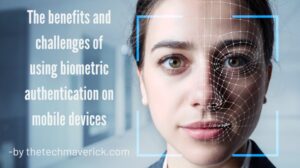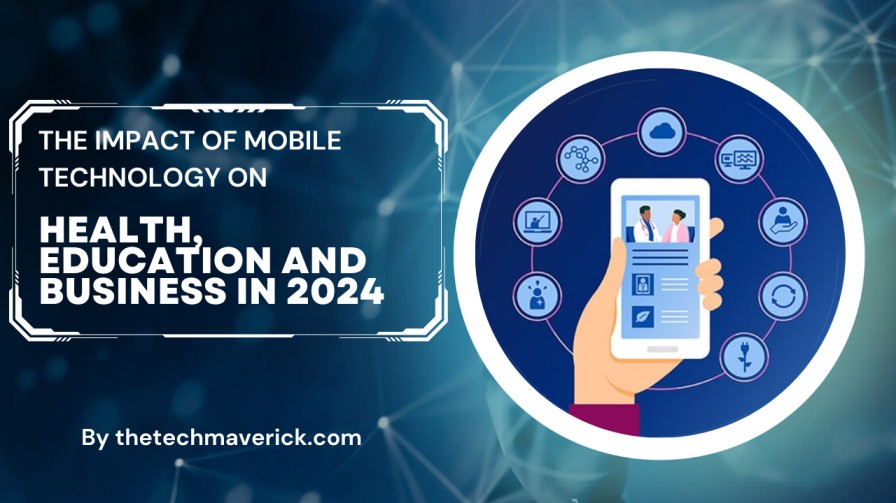The benefits and challenges of using biometric authentication on mobile devices in the USA

Introduction
With mobile devices being an integral part of everyday life, ensuring their security is of utmost importance. One of the most secure methods of mobile authentication is biometric authentication, which uses unique physical features of users to verify their identity. Biometric technology has become increasingly popular in recent years, but what are its benefits and challenges?
In this article, we will explore the advantages of biometric authentication on mobile devices and how it helps to enhance mobile device security. We will also discuss the challenges that come with using biometric authentication, including the potential risks to mobile device privacy. Furthermore, we will provide an overview of the different biometric authentication methods and practical considerations for their implementation.
Finally, we will examine the varied industries and applications where biometric authentication is being used on mobile devices. From healthcare to finance, biometric technology is changing the way we protect our personal information.
Advantages of Biometric Authentication on Mobile Devices
Biometric authentication is fast becoming the standard for secure mobile authentication. It offers several advantages over traditional authentication methods, such as passwords and PINs, which can be easily forgotten, stolen, or guessed. Biometric authentication provides enhanced security by using unique biological characteristics such as fingerprints, iris patterns, voice recognition, and facial features that cannot be replicated or forged.
Strong User Authentication
Biometric authentication promises stronger user authentication compared to passwords and PINs, which can be easily hacked or compromised. Your biometric credentials are unique to you, making it difficult for unauthorized individuals to gain access to your mobile device. Biometrics also offer multifactor authentication, ensuring additional layers of security for sensitive data and applications.
Convenience and User Experience
Biometric authentication is convenient as it offers a seamless user experience. Unlike passwords that require frequent input, biometric authentication can be done with a simple touch, swipe, or look. It also eliminates the inconvenience caused by forgotten passwords or transposed numbers, which can cause significant delays in accessing your mobile device. Biometric authentication ensures that you can securely access your device with ease.
Reduced Risk of Unauthorized Access
Biometric authentication reduces the risk of unauthorized access to your mobile device and the sensitive data within. This ensures that your mobile device is protected from being used by unauthorized individuals, keeping your personal information, financial data, and other sensitive information safe from theft or misuse. Biometrics help to ensure data privacy, compliance, and reduce the risk of identity theft.
Challenges of Using Biometric Authentication on Mobile Devices
While biometric authentication on mobile devices offers several benefits, it also poses some significant challenges. As with any security measure, biometric authentication is not foolproof and has potential disadvantages. One of the main challenges of using biometric authentication is the possibility of false positives or false negatives, which can affect the reliability of the security measure. False positives occur when the system identifies an incorrect individual, while false negatives happen when the system fails to recognize a legitimate user.
In addition, storing biometric data on mobile devices raises privacy concerns. Unlike passwords or PINs, biometric data cannot be changed if it is hacked or stolen. This means that if your biometric data is, for instance, misused by a third party, it could open you up to identity theft or other types of fraud. As mobile devices become an increasingly important part of our daily lives, there is growing concern about the risks associated with the collection and storage of biometric data.
Another disadvantage of biometric authentication is that it may not work for all users. Certain medical conditions or physical characteristics can make it difficult for some individuals to use biometric authentication methods, such as fingerprint recognition or facial recognition. As such, it’s important to offer alternative authentication methods for those who are unable to use biometric authentication.
In conclusion, while biometric authentication is undoubtedly a powerful security measure, it is not without its challenges and potential disadvantages. As such, it is essential to weigh the benefits against the risks and to consider alternative authentication methods when necessary.
Biometric Authentication Methods for Mobile Devices
Using biometric technology for mobile device security is becoming increasingly popular. There are several biometric authentication methods available for mobile devices that enhance the security measures. In this section, we will discuss the most commonly used biometric methods in mobile authentication.
Fingerprint Recognition
Fingerprint recognition is one of the most common biometric authentication methods available for mobile devices. It requires users to place their finger on the device’s fingerprint scanner. The scanner sends the fingerprint data to the device’s software, which compares the fingerprint to the stored data to authenticate the user. This method is widely used because it is quick, reliable, and easy to use.
Facial Recognition
Facial recognition involves using the front camera of the mobile device to scan and match the user’s face to authenticate access. The algorithm analyzes the unique features of the user’s face, such as the distance between the eyes and the shape of the face, to authenticate the user. This method is commonly used in mobile devices with Face ID technology, which is known for its high accuracy rates and convenience.
Iris Scanning
Iris scanning is a biometric security method where the device’s camera captures the unique pattern of the user’s iris. The user needs to bring the device close to their eyes, and the camera captures an image of the iris. The device’s software then verifies the identity of the user by comparing the captured image with the stored one. This method is known for its high accuracy rates and security levels.
Voice Recognition
Voice recognition refers to the authentication method that involves the user’s voice. The mobile device records the user’s voice to match it with the stored data to authenticate the user. This method works well in a noisy background and is often used in hands-free mode.
Multi-Factor Authentication
Multi-factor authentication combines multiple authentication methods to enhance security measures. It offers an extra layer of security to mobile device users, making it more difficult for unauthorized users to access the device. The most common examples of multi-factor authentication are a combination of fingerprint and facial recognition or fingerprint scanning and password authentication.
Biometric technology is known for its reliability, security, and ease of use. The different biometric authentication methods provide device users with multiple options to secure their mobile devices. However, it is vital to understand the security protocols and standards for each method, and select the appropriate one based on the use-case constraints and security needs.
Implementing Biometric Authentication on Mobile Devices
Implementing biometric authentication on mobile devices requires careful consideration of both hardware and software requirements. Mobile devices must be equipped with the necessary hardware to capture and store biometric data securely. This may include sensors for fingerprint recognition, facial recognition, or iris scanning.
Software requirements involve integrating biometric technology into existing mobile security systems. This process may require collaboration between software developers and biometric vendors to ensure seamless integration and optimal performance.
One key consideration when implementing biometric authentication is user adoption and acceptance. Not all users may be comfortable with providing their biometric data to their mobile devices, even though it offers improved security features.
Integrating Biometric Authentication into Mobile Security
Integrating biometric authentication into mobile security systems requires a multi-layered approach to ensure the safety of sensitive data and information. This includes combining biometric authentication with other security measures such as passwords or PINs.
One of the benefits of biometric authentication is its ability to offer continuous authentication, protecting mobile devices even when other security measures fail.
| Advantages | Disadvantages |
|
|
Despite the challenges associated with implementing biometric authentication on mobile devices, it offers several advantages that make it an attractive security measure. By combining hardware and software requirements, integrating biometric technology into existing mobile security systems, and considering user adoption and acceptance, biometric authentication can provide enhanced security for mobile devices and their users.
Biometric Authentication in Industries and Applications
Biometric authentication on mobile devices is becoming increasingly prevalent in a variety of industries and sectors. Organizations are adopting this technology to enhance security measures, streamline processes, and improve overall user experience. Here are a few examples:
Banking and Finance
The banking and finance industry has been an early adopter of biometric authentication on mobile devices. Biometric authentication has replaced traditional login credentials and added an extra layer of security to online banking and financial transactions. Banks are using technologies such as fingerprint scanners, voice recognition, and facial recognition to provide secure authentication and protect their customers’ assets.
Healthcare
The healthcare industry is also leveraging biometric authentication on mobile devices to maintain the privacy and security of medical records. Biometric technology allows physicians and healthcare providers secure access to patient health records and protects sensitive information such as health status, medical history, and test results. It also allows for a more efficient and accurate diagnosis and treatment of patients, providing better healthcare experiences overall.
Government
Biometric authentication is being utilized in government sectors to strengthen security protocols and enhance identity verification. Biometric authentication on mobile devices is being used by law enforcement agents, homeland security officials, and other government entities to safeguard personal information and ensure authenticity.
Retail and Commerce
Retail and commerce sectors are also adopting biometric authentication on mobile devices. Mobile payments using biometric technology are becoming increasingly popular, and customers are able to make secure and contactless transactions using facial recognition or fingerprint authentication. This technology reduces the risk of fraud and enhances the shopping experience for customers.
Travel and Hospitality
The travel and hospitality industry is also using biometric authentication on mobile devices to provide a more seamless and secure experience for travelers. Biometric technology is being used in airports and hotels, enabling quick and secure check-ins and accessing areas that require security protocols.
Future Trends in Biometric Authentication on Mobile Devices
Biometric authentication on mobile devices has come a long way in recent years and is expected to continue advancing rapidly. Emerging technologies, such as multi-factor authentication and continuous authentication, are some of the future trends in biometric authentication set to revolutionize mobile device security.
Multi-factor authentication (MFA) combines two or more authentication methods to create an additional layer of security. For example, using facial recognition and voice recognition together can enhance the security of mobile devices. Continuous authentication, on the other hand, involves biometric authentication throughout a user’s entire session, continually verifying the user’s identity, thereby minimizing the risk of unauthorized access.
The evolving regulatory landscape will also play a significant role in shaping the future of mobile device security. Governments worldwide are increasingly enacting laws that enforce the use of biometric authentication to protect personal data. The EU’s General Data Protection Regulation (GDPR) and California Consumer Privacy Act (CCPA) are prominent examples of such regulations. These laws will drive the adoption of biometric authentication on mobile devices and prompt further innovation in the field.
| Future Trend | Description |
| Multi-factor Authentication (MFA) | Combines two or more security authentication methods for enhanced security. |
| Continuous Authentication | Biometric authentication performed throughout a user’s session, ensuring ongoing identity verification. |
| Increased Regulatory Landscape | Governments worldwide are enacting laws to enforce the use of biometric authentication to protect personal data, driving future adoption and innovation. |
As biometric authentication on mobile devices becomes more common, developers will focus on improving the technology’s accuracy, speed, and convenience. The adoption of artificial intelligence and machine learning within biometric authentication systems will play a critical role in enhancing these features. The future of biometric authentication on mobile devices is exciting, and we can expect to see continuous evolution and improvement over the coming years to ensure maximum security for personal data.
Conclusion
In conclusion, the use of biometric authentication on mobile devices is an effective way to enhance your mobile device security. It provides stronger user authentication and reduces the risk of unauthorized access, ensuring that your personal information and data remain safe. However, there are also challenges associated with using biometric authentication, such as potential privacy risks and technical limitations.
As such, it is important to carefully consider the implementation of biometric technology on your mobile devices. This includes evaluating the necessary hardware and software requirements, as well as user adoption and acceptance. By doing so, you can benefit from the advantages of biometric authentication while minimizing the risks.
The use of biometric authentication is becoming increasingly popular across various industries and applications, from banking and finance to healthcare and government sectors. As technology continues to evolve, we can expect to see advancements in biometric authentication that offer even greater security and convenience.



Pingback: How to Extend Your Mobile Phone's Battery - The Tech Maverick